How to Start a Podcast
Here's how to make a podcast:
Download and install Movavi Screen Recorder.
- Set up the audio recording parameters.
- Record the audio track.
Edit the recording and save the result.
How to make a podcast
Starting a podcast is one of the best and most effective ways to present information to your audience. Don’t be afraid of starting your own digital radio show, digest, or serialized audiobook – the creation is not hard, even if you do a podcast from home.
What do you need to start your first podcast? In actuality, all you really need for starting a podcast is a computer with an internet connection, a microphone, a good sound card, and software like Movavi Screen Recorder. All of this can be very inexpensive, if not completely free.
What is a podcast? In short, a podcast is an internet-based talk show that can feature guests and producers from all over the world. As the host, you will be responsible for collecting guest interviews, submitting them to your sponsors, arranging studio time, and, of course, producing the finished podcast. However, it’s not quite as simple as that might sound, hence these tips on creating a podcast that will help those of you just getting started in the business.
Here are some basics that will help you create a podcast and then make it perfect.
You also have to make sure that each of your episodes is unique. You should never repeat the same content; instead, you should select and incorporate new and interesting subjects and guests that expand on your theme.
But don’t be distracted by your imagination, because age, gender and social status are not the most essential attributes to understand. Focus on questions like: when and where will your subscribers listen to you and how much time do they have for listening to one episode? A business executive and a stay-at-home parent may be both interested in travelling. But the business executive listens to podcasts while commuting and may only have 10 to 15 minutes to listen, while the stay-at-home parent may have several hours to listen while cooking or doing housework.
Understanding your audience will help you choose the most appropriate format.
Think about what’s easiest for you – to chat with other people or cover the topic yourself. If you choose the first, you’ll need to find participants who are just as passionate about the topic as you are. You’ll need to search for people whose opinions are important and interesting for your audience, and some may not like the idea of taking part in a homemade radio show.
If you’re confident about your ability to carry the show solo, the monologue will be a better choice. But, in this case, you have to make a good plan because there should be no long pauses or boring stretches.
Separate your performance into four sections – inception, main body, summary, conclusion. This structure is also known as a fish skeleton. Then detail each part. What will you start with? How are you going to greet people? What’s the agenda? What will be the headliner for your stream?
The main body should be also divided up into multiple subsections. Define the points that you want to highlight and think through each of them. Fill out some interesting facts and maybe add a little humor.
At the end of the show, summarize the content for your audience. If the episode was short, it can be as short as one sentence. But if you were talking for an hour, it’s better to give a more detailed summary.
What can you say in your conclusion? It’s a good idea to invite people to the next episode and ask them for feedback. You can also create a branded ending that will be your identifier.
After you’ve made the main plan, make a Plan B. You’ll need it in case something goes wrong. Do you know how astronauts prepare for flight? One of the things they do is create scenarios of their death. They try to predict the worst situations and make plans of what to do in those cases. You should do the same with your show. Imagine what can go wrong and make a Plan B so you can react quickly.
If your budget is tight, you can choose to use cheap microphones that are not branded, but it is important that the quality of the microphone is good. If the microphone is not portable, you might want to borrow one from a friend who uses good quality microphones. Many companies offer a range of accessories, including cables and USB microphones. When choosing a USB microphone, you can either go for a wired or wireless model.
Some recording devices come with pre-installed software that can help in editing your podcast. You can get software like Movavi Video Editor that will make editing easier. If you already own music software, you might want to check which programs it is compatible with and download it.
You may have some built-in tools for audio recording on your computer, but we would not recommend using them, as they’re unlikely to produce clear sound and don’t include editing tools.
There are plenty of audio recording programs available – from desktop software to online recorders and browser extensions. But the most convenient and reliable way is to install a desktop app. When choosing an appropriate recorder, pay attention to the choice of exporting formats. Some programs don’t support saving audio separately from video. So you wouldn’t be able to export files in MP3 and upload them to podcast hosting websites.
Later, we’ll explain how to make podcasts with software from Movavi. You can try it for free before deciding to use it in future or explore other options.
Before you start your first show, you need to train yourself. First of all, practise your talk and listen to how it sounds. Written material is different than spoken words. You may notice that some narrative can be easily understood when it’s on paper, but less so when it’s spoken aloud. You could even record your presentation with a voice recorder to check how it sounds.
Pay attention to the correct pronunciation of words, especially if you’re going to use complex terminology. Remember that people prefer to listen to clear speech.
Check the equipment and recording program you’re going to use. If you encounter technical difficulties during the recording, you may lose the thread of your presentation and get confused. So, it’s better to spend a little more time on preparation than be disappointed with the result.
One great way to attract listeners is via social media sites. Twitter, Facebook, and Google+ all have millions of viewers, and new podcast episodes are being uploaded to YouTube every week. If you have a Facebook page or a Twitter account, you should promote your podcast every week to reach a large audience. You can even upload multiple podcasts to each social media platform every week.
You can make money through podcast hosting by selling advertising space or products related to your podcast, but you can also use wrap-around marketing strategies to promote your episodes. Consider hiring a ghostwriter or professional website designer to help you create a newsletter, ad campaign, and other online marketing efforts to start generating revenue from your new career as a podcast host.
How to use a podcast recording program
Let’s talk more about software for producing podcasts. Every podcast creator needs reliable software for making and editing audio tracks. In this article we’ll explore how to start a podcast using software from Movavi.
Our Movavi Screen Recorder + Movavi Video Editor bundle is functional, fast, and very simple to use. It will help you become a podcast producer in no time: just capture your voice, add some music, and edit the result so it’s just the way you want it.
Movavi Screen Recorder is much more than just a podcast generator; it’s also a powerful tool for capturing and editing streaming video and screen activity, saving Skype calls, ripping webinars, and a whole lot else besides.
Advantages of Movavi Screen Recorder + Movavi Video Editor:
Disadvantages of the programs:
To learn how to start a podcast with Movavi Screen Recorder + Movavi Video Editor, just download the appropriate version to your PC or Mac below and follow this short guide on how to make a podcast.
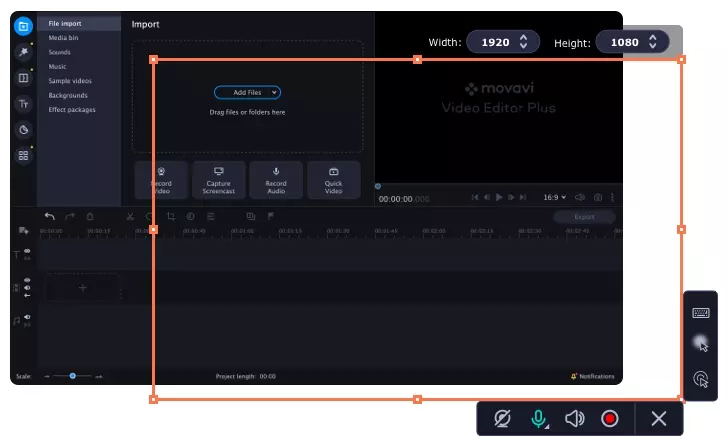
Step 1. Install the program
Launch the setup file you’ve just downloaded and follow the instructions on your screen. Once the installation process is complete, the program will open automatically. The whole process will take just a few minutes.
Step 2. Set up the audio recording parameters
Launch Movavi Screen Recorder. On the pre-recording panel, you’ll see a camera icon. Click on it and choose the random capture area. Don’t worry – the screen will not be in the output.
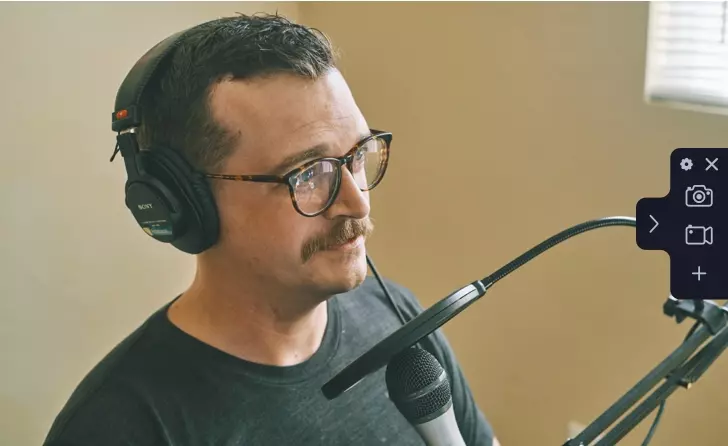
Now you see the recording panel. Mute Webcam and Screen, and activate Microphone. If you use a portable microphone or headphones for audio recording, click on the Microphone icon and choose the appropriate device from the drop-down menu. If you want to include system sounds in your podcast, activate System Sound.
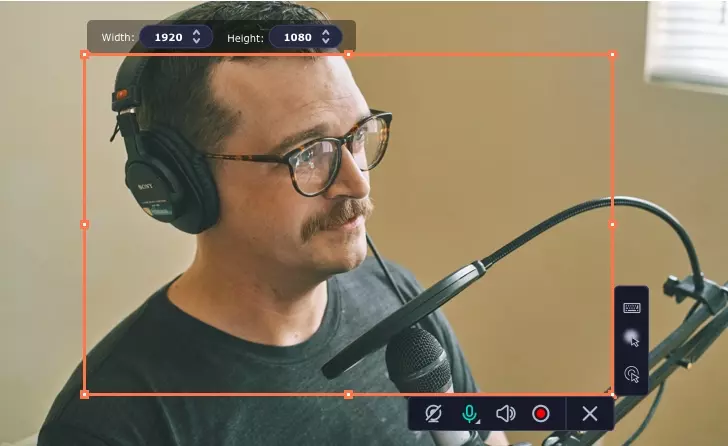
Step 3. Record the audio track
Now click the REC button. The recording starts in three seconds. Don’t be confused if the first sentence sounds weird. Just start your speech one more time. You can delete the false start in the editing program.
Step 4. Edit the recording
When you’re done, stop recording. Your track will appear in the preview window. You can trim it right in the Screen Recorder.
If you need more advanced editing tools like audio mixing, click on the Open in Video Editor button to launch Movavi Video Editor.
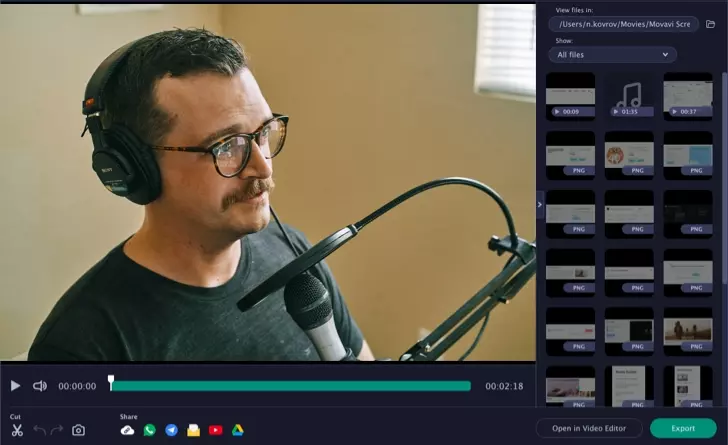
Now you can tweak your track however you want: delete unwanted elements, set the audio volume and speed, insert background music behind your voice, add intro and outro music. You can choose from the built-in audio tracks or add audio from your computer.
If you want to cut out unwanted parts, place the red marker at the beginning of the segment you want to cut out and click the scissors button. Then move the red marker to the end point of the unwanted segment and click the scissors again. Now you can delete the marked piece by selecting it and clicking the trash can button. The remaining parts will be joined automatically.
If you want to link in another track or add background music to your digital audio show, click the Add Media Files button and select the desired audio file. It will be linked automatically to your voice recording. Click and drag it down to create a separate track and use the additional audio as background music.
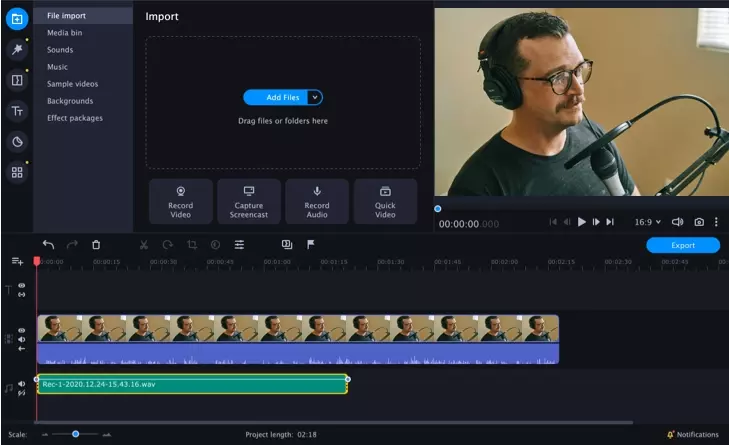
To access the complete set of audio editing tools, select the audio on the Timeline and click on the Audio Properties button. This will open the Tools tab, where you can change the Volume and Speed of your recording, normalize, denoise, or reverse it, and even apply special effects.
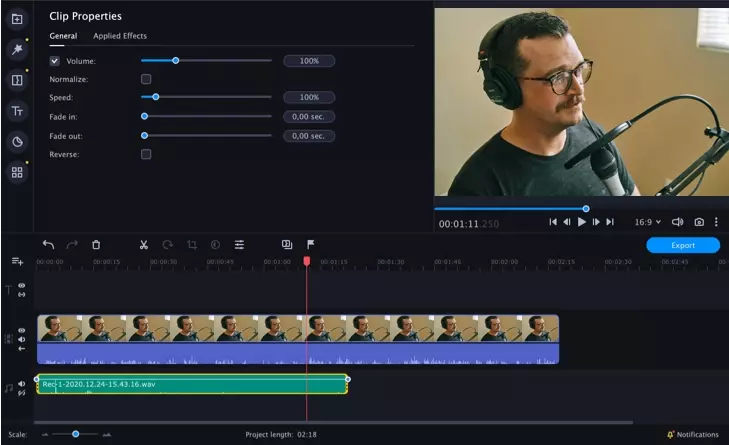
Step 5. Save the result
If you’re satisfied with the result, save your audio track by clicking the Export button. In the new dialogue box, choose the MP3 format. You should also choose the folder where you want to save the file and the filename. Finally, save the file.
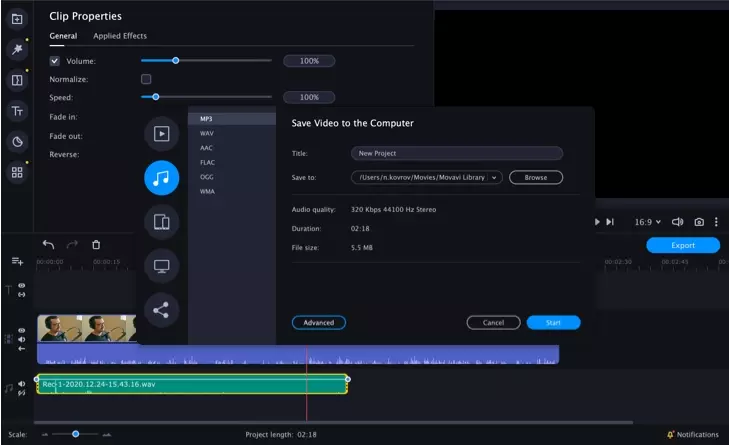
Congratulations! You’ve just produced a podcast, and now you can do whatever you want with it: share it with friends, upload it to your blog, or add it to a podcast platform and wait for it to get popular!
Movavi Screen Recorder
The perfect way to record anything from your screen
Disclaimer: Please be aware that Movavi Screen Recorder does not allow capture of copy-protected video and audio streams.
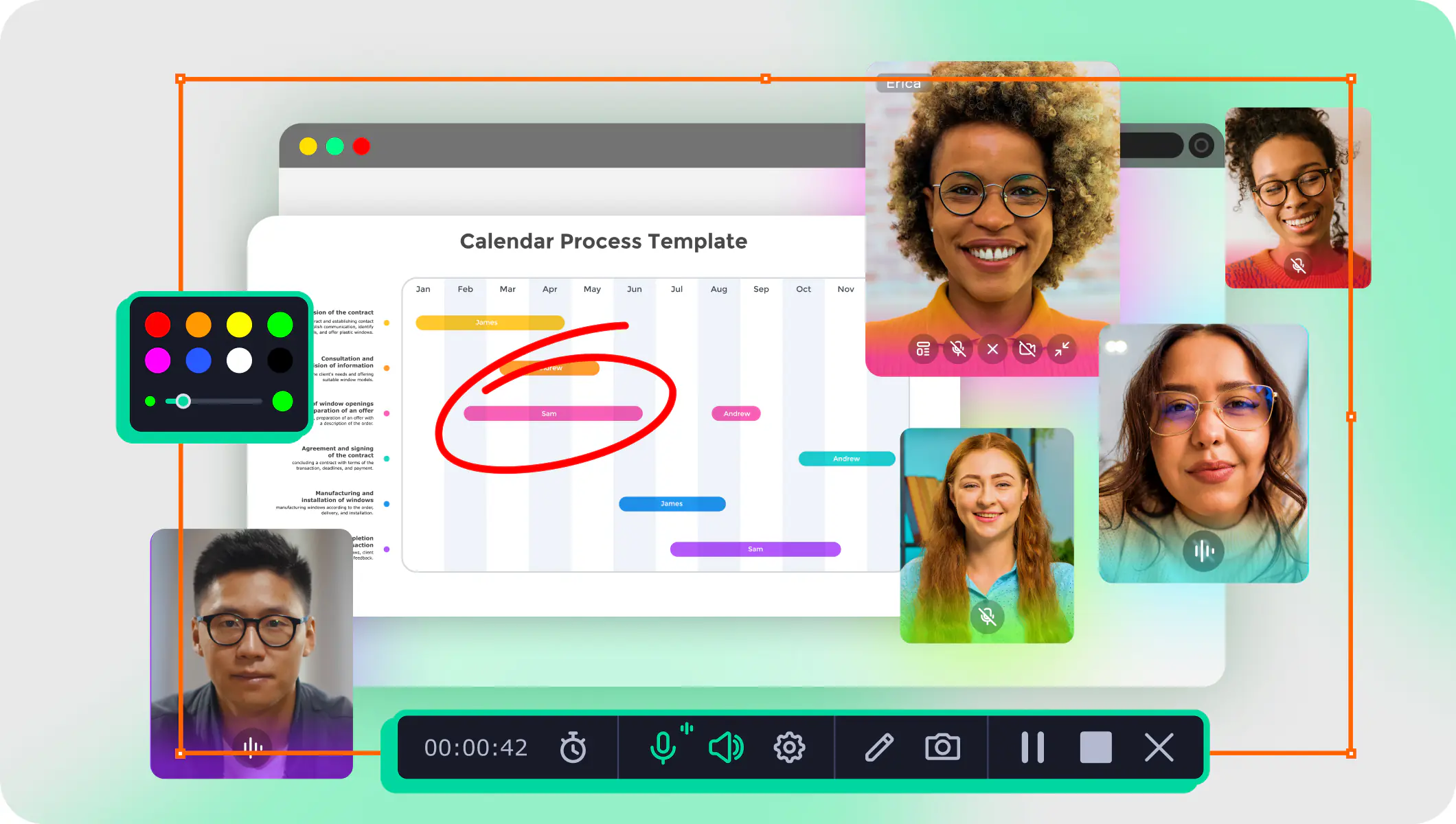
Frequently asked questions
See other useful how-to guides
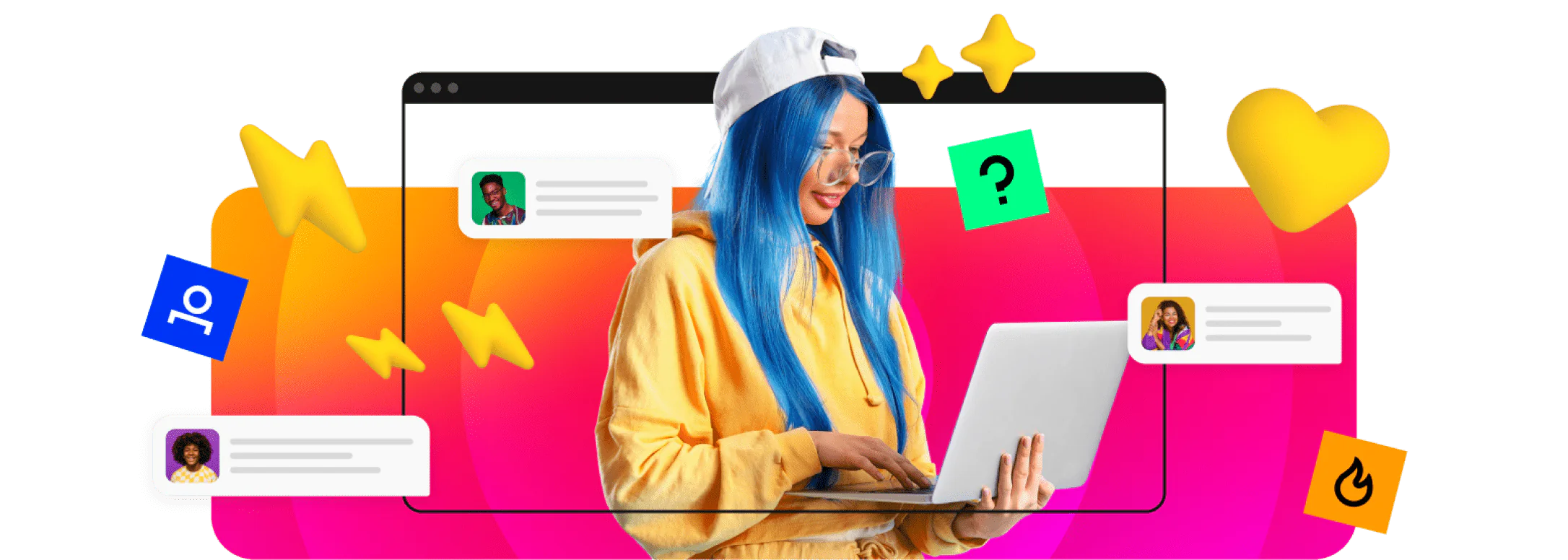
Have questions?
If you can’t find the answer to your question, please feel free to contact our Support Team.
Join for how-to guides, speсial offers, and app tips!
1.5М+ users already subscribed to our newsletter